
A species that is extinct in the wild (EW) is one that has been categorized by the International Union for Conservation of Nature as only consisting of living members kept in captivity or as a naturalized population outside its historic range. Classification requires exhaustive surveys conducted within the species' known habitat with consideration given to seasonality, time of day, and life cycle. Once a species is classified as EW, the only way for it to be downgraded is through reintroduction.
The Daghestan pine vole is a species of rodent in the family Cricetidae. It is found in Russia, Georgia, Armenia, and Azerbaijan.

The Somali hedgehog is a species of mammal in the family Erinaceidae. It is endemic to Somalia and Somaliland. The Somali hedgehog is nocturnal.

The Southeast Asian shrew is a species of mammal in the family Soricidae. It is found in Cambodia, India, China, Laos, Malaysia, Myanmar, Thailand, and Vietnam.

The Javanese shrew is a species of mammal in the family Soricidae. It is native to Indonesia and East Timor. It ranges throughout Java and the Lesser Sunda Islands. It has also been introduced to Ambon Island and the Aru Islands.
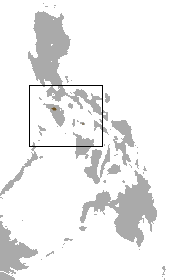
The Mindoro shrew is a species of mammal in the family Soricidae. It is endemic to the Philippines.
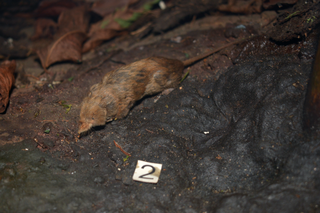
The Oriental shrew is a species of mammal in the family Soricidae. It is endemic to Indonesia.

The pale gray shrew is a species of mammal in the family Soricidae. It is endemic to Pakistan and is distributed in the Shigar valley and the western edge of Deosai.
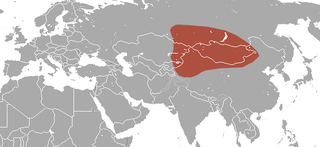
The Siberian shrew is a species of mammal in the family Soricidae. It is found in Russia, and possibly China and Mongolia.
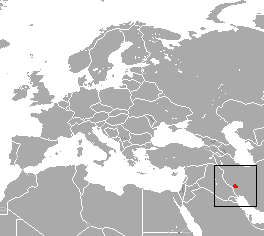
The Iranian shrew is a species of mammal in the family Soricidae. It is endemic to Iran. It is threatened by habitat loss.
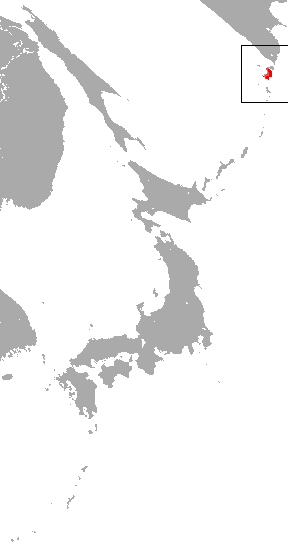
The Paramushir shrew is a species of mammal in the family Soricidae. It is endemic to Russia. Its natural habitat is temperate forests. It is likely named for Paramushir Island, home to several other species of shrew in the genus Sorex.

Portenko's shrew is a species of mammal in the family Soricidae that is endemic to Russia.

The Caucasian shrew is a species of mammal in the family Soricidae. It is found in Armenia, Russia and Turkey.
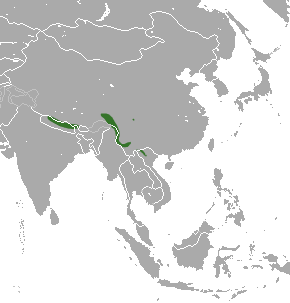
The long-tailed brown-toothed shrew is a species of mammal in the family Soricidae. It is found in China, India, Myanmar, Nepal, and Vietnam.

The long-tailed mountain shrew is a species of mammal in the family Soricidae. It is found in China, Myanmar, Nepal, and Vietnam.

The Lowe's shrew is a species of mammal in the family Soricidae. It is found in China, Myanmar, Thailand, and Vietnam.
Macroperipatus insularis is a species of velvet worm in the Peripatidae family. It is found in Jamaica, and Hispaniola. The original description of this species is based on a female specimen, 55 mm long, with 30 pairs of legs.
Mesoperipatus is a monospecific genus of velvet worm in the Peripatidae family, containing a single species Mesoperipatus tholloni. It is found in Gabon, making it the only known species of velvet worm in the tropics of Africa, and the only known species of peripatid velvet worm in Africa. Females of this species have 24 to 27 pairs of legs; males have 23 or 24. This species is viviparous, but too little is known of its embryology to describe its reproductive mode in any more detail; the presence of a placenta, for example, has not been confirmed.
Speleoperipatus is a monospecific genus of velvet worm in the Peripatidae family, containing the single species Speleoperipatus spelaeus. This species is a pale greenish yellow, almost white, with 22 or 23 pairs of legs and no eyes. Specimens range from 27 mm to 34 mm in length. The minimum number of leg pairs found in this species (22) is also the minimum number found in the neotropical Peripatidae. This velvet worm is viviparous, with mothers supplying nourishment to their embryos through a placenta.
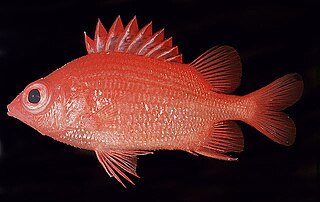
Sargocentron iota, the dwarf squirrelfish, is a nocturnal benthopelagic species of squirrelfish belonging to the genus of Sargocentron. It can be found in the Indo-Pacific region. It inhabits steep outer reef slopes.
















